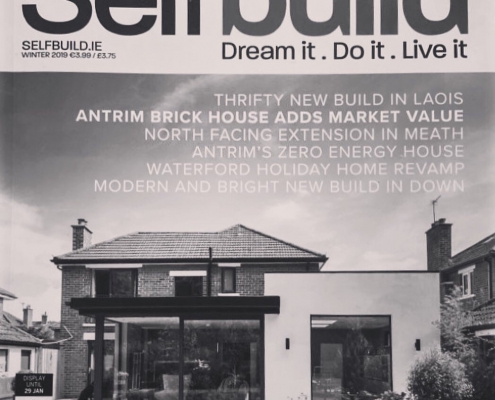Self Build Magazine
Belfast Design Week – Panel Discussion
As part of Belfast Design Week, 2019, I have been asked to speak as part of a panel of inspirational women, discussing the importance of conversations about the creative journey; and how as female entrepreneurs we can uplift & encourage others.
I will be speaking about, and giving an insight into the realities; the highs and the lows of the self-employed journey.
As a prelude to this event, I had the pleasure of catching up with Esther from ‘Womenfolk’:
Can you tell us a bit about yourself and what inspired you to set up your business?
Hi! I’m Roisin McCann; a registered architect, mum of 3 girls, and I have recently started my own architectural practice, along with my brother Martin.
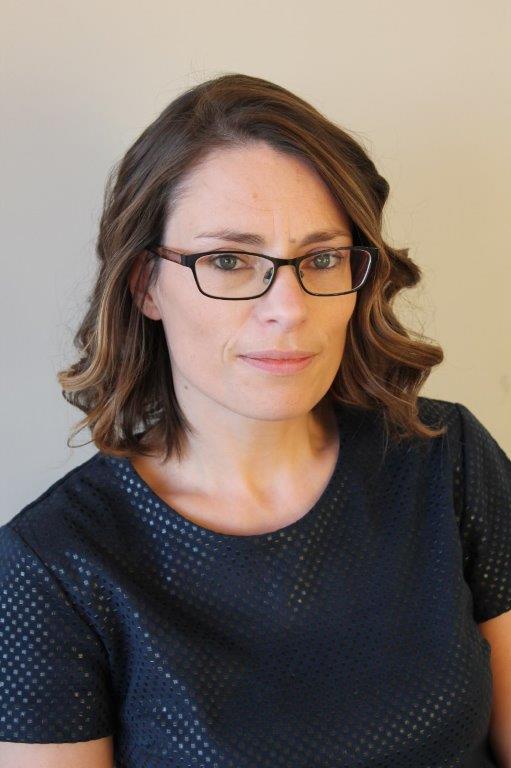
Prior to starting out on my own, I was a design director in an architects practice, managing +20 people, working on hotels, one-off houses, housing developments & commercial buildings.
Setting up in my own business was almost a natural progression. Being raised in a family with entrepreneurial parents, and consequently, siblings, my brother (an architectural designer) and I began to ponder our future…a couple of years later, and here we are!
What/who influences/motivates you?
On a personal level, my mum is the person who tells me I can do anything, has my back, believes in me, is my sounding board; pushes me forward with encouragement, and tells me if I step out of line!
From a professional, creative side, the need to be creative, to design beautiful things makes me switch on my computer in the mornings. I absorb ideas from everywhere – social media constantly bombards me with ideas, details, colours, materials; I could get lost for hours on Pinterest just looking at staircases!
However, it is the site, and more importantly, our clients who drive me. The clients who know what they want, but have an open mind; the ones that fully engage in the design process; the ones that want to push boundaries, are what motivates me to hone, develop and rationalise my designs.
What has been your biggest hurdle and your proudest moment or accomplishment with your business?
In some ways, our biggest hurdle is also our greatest strength. My brother and I have come to this point from very different pathways: me, from the design, planning and management side; Martin, from the technical, detailed side. I am the big picture person, in personal and professional life; with Martin, it’s all about the detail. This has, in the past, caused some sibling tension! However, realising this, acknowledging this, and getting a business consultant in for a short period of time, has allowed us to understand each other better, and use this to our advantage. It gives our buildings the edge – because we look for different things, clients get the whole package.
One of our biggest accomplishments has been Martins House winning ‘Energy Efficient House of the Year UK’. His entire fuel costs for the year are approx. £600 – and he makes £800 from the renewable energies in his house – so he actually makes money from his house! Martin is a certified Passive House designer: in an era where energy efficiency and running costs are paramount, this gives us an important advantage over our competitors.
Media coverage of #HouseoftheYearIE
Picked up by some media outlets, our Award Winning House of the Year IE, was given some beautiful accolades…To name but a few:
The Newsletter: available to view online at https://www.facebook.com/belfastnewsletter/
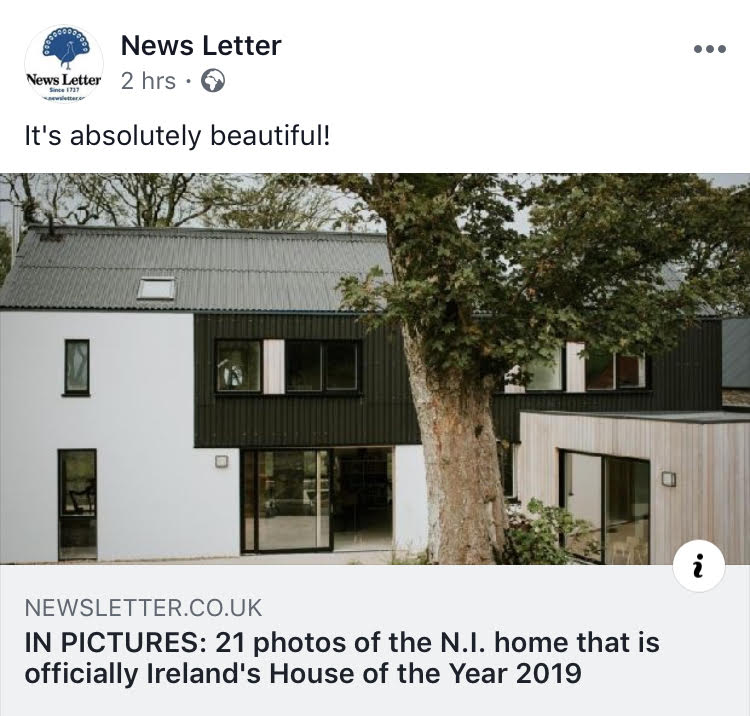
The Derry Post
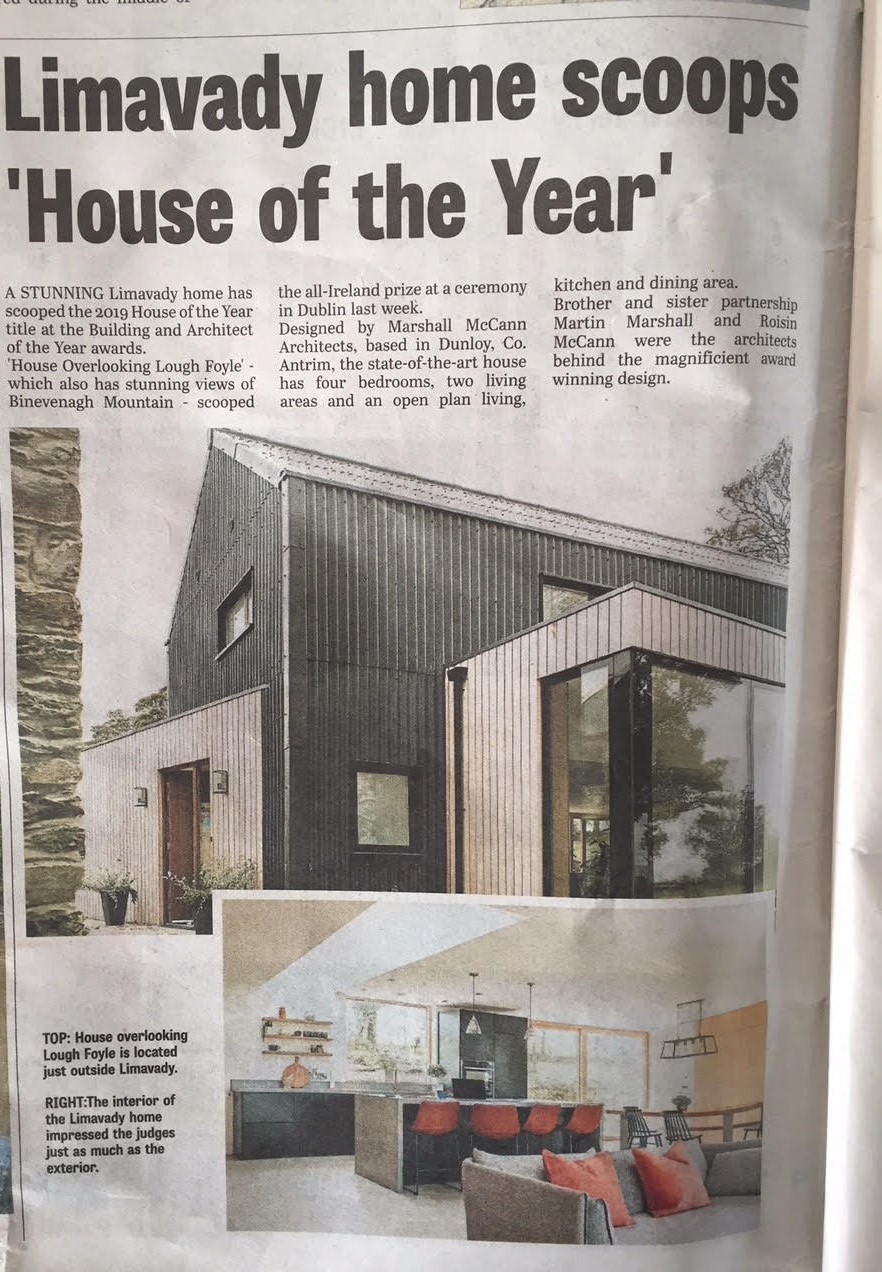
So…we won!! House of the Year IE
Our project, ‘House overlooking Lough Foyle’, has been awarded ‘House of the Year IE’ in a glittering ceremony in The Mansion House, Dublin!
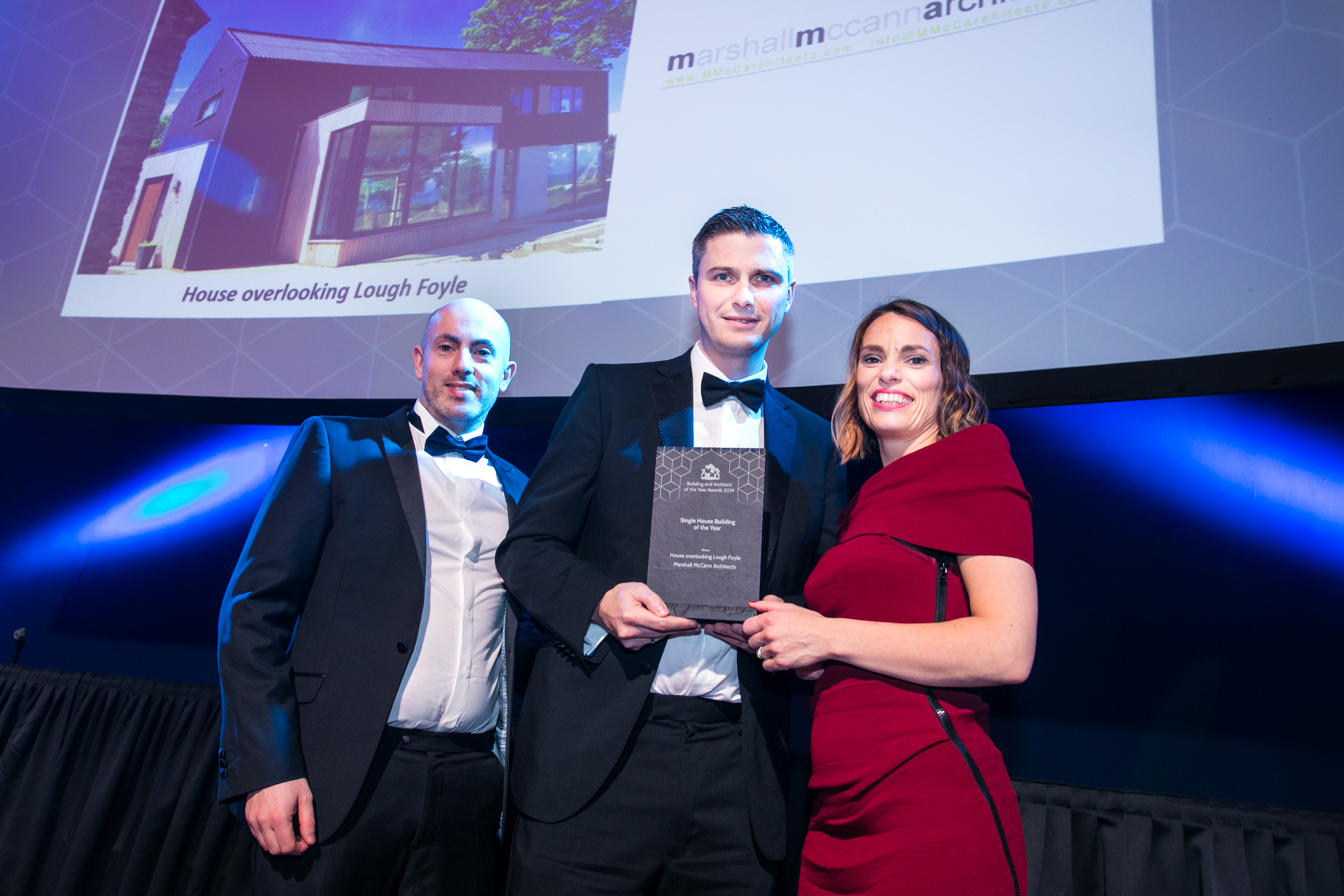
We had an amazing night at the Building & Architect of the Year awards ceremony, sharing the stage with other incredible architects.
Whittled down to a shortlist of 3 houses in the whole of Ireland, we were delighted for our house to have been crowned ‘House of the Year’.
As well as House of the Year, as a special bonus, we were shortlisted on the night for overall ‘Building of the Year’.
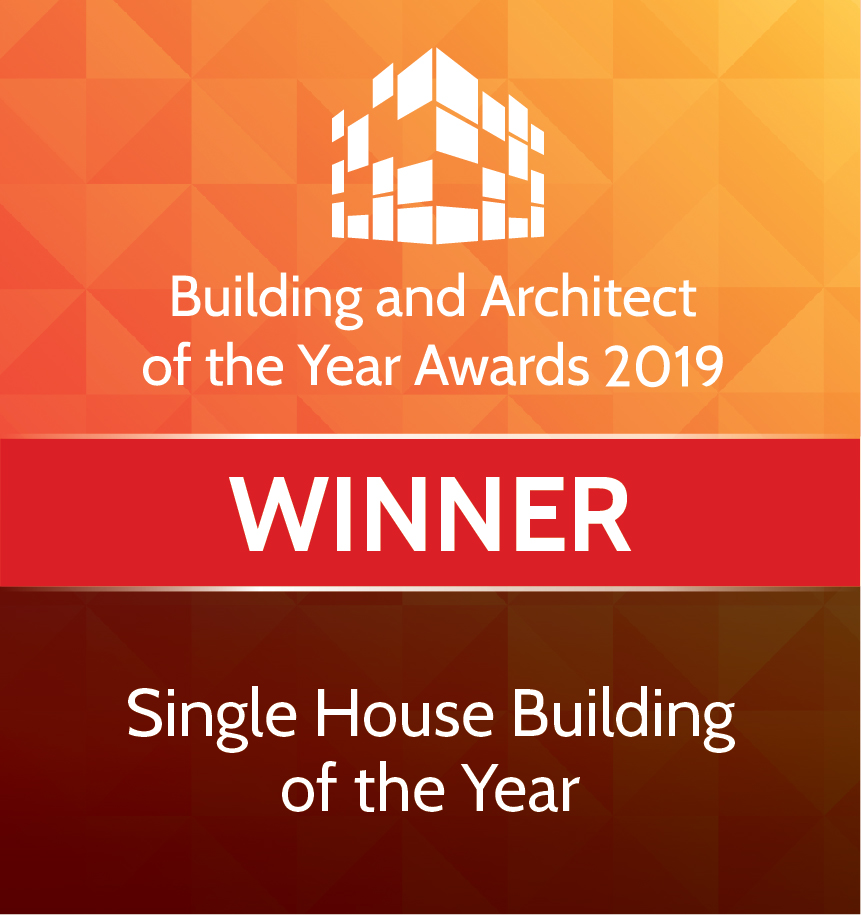
Here’s to many more Award winning designs!
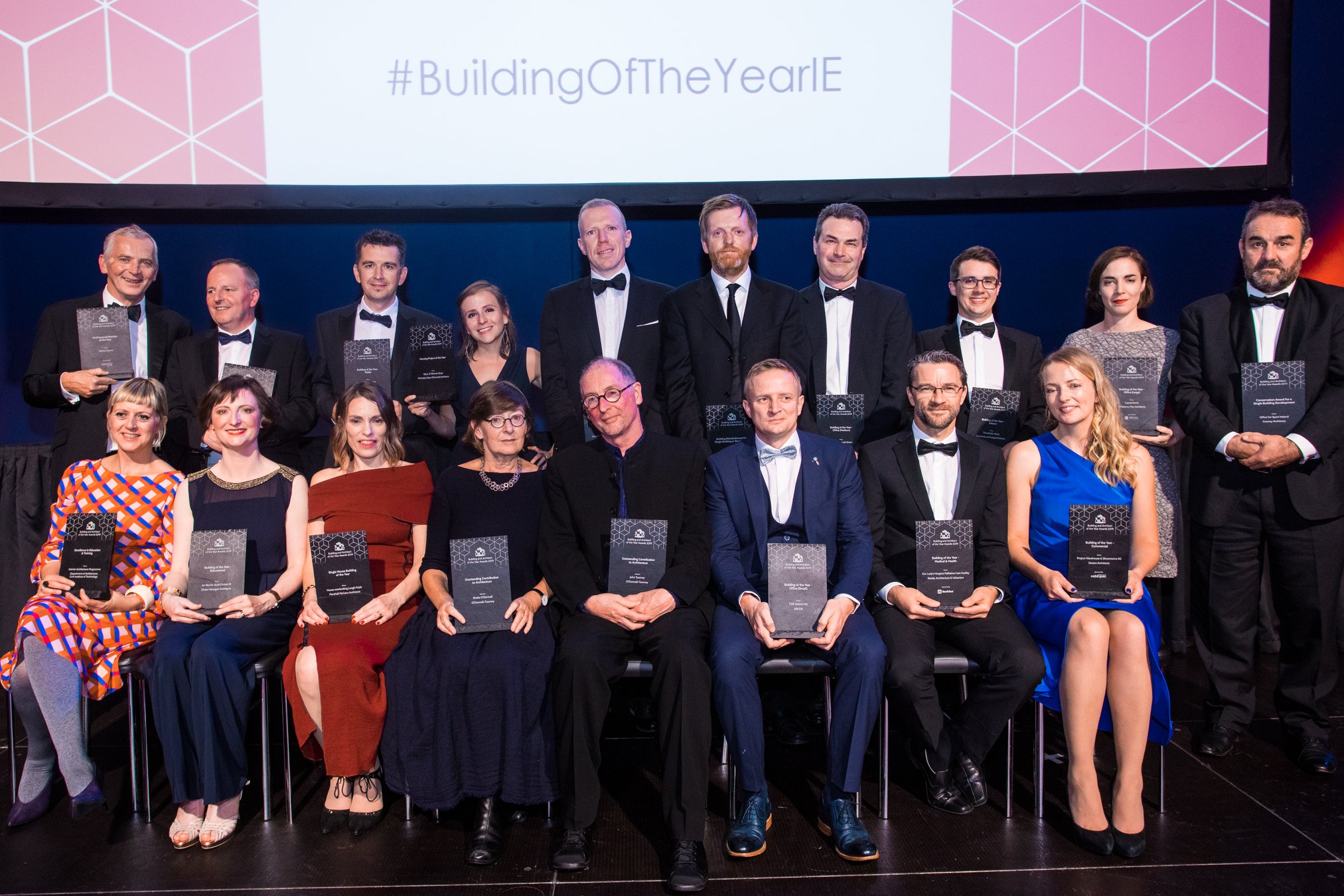
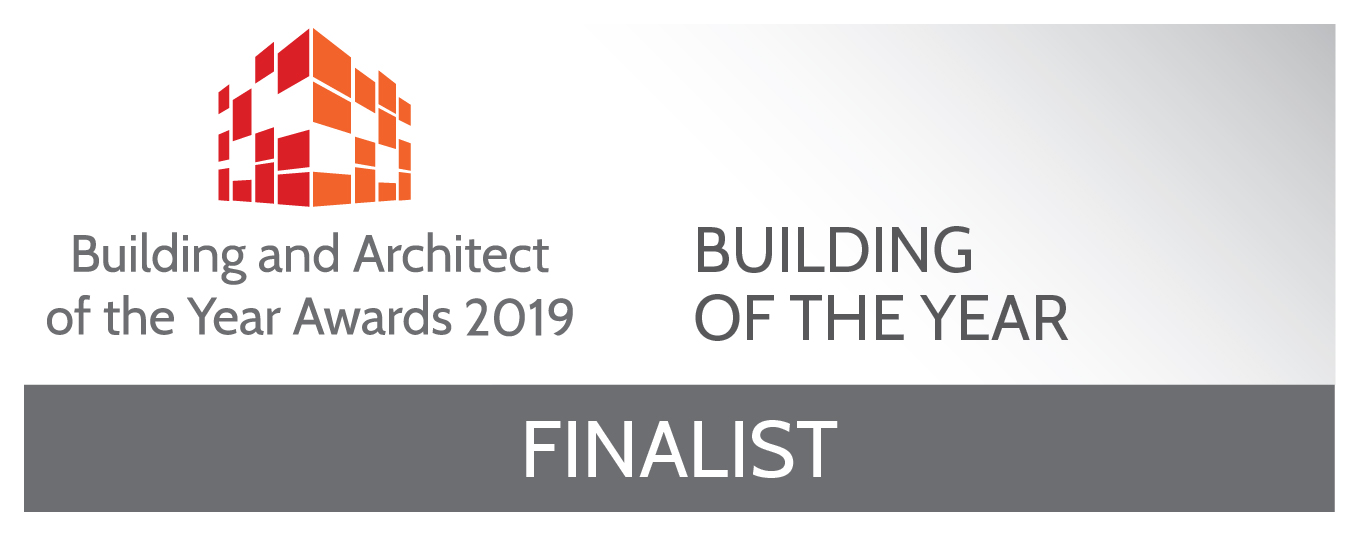
Read all about it!! Irish Times publishes shortlist
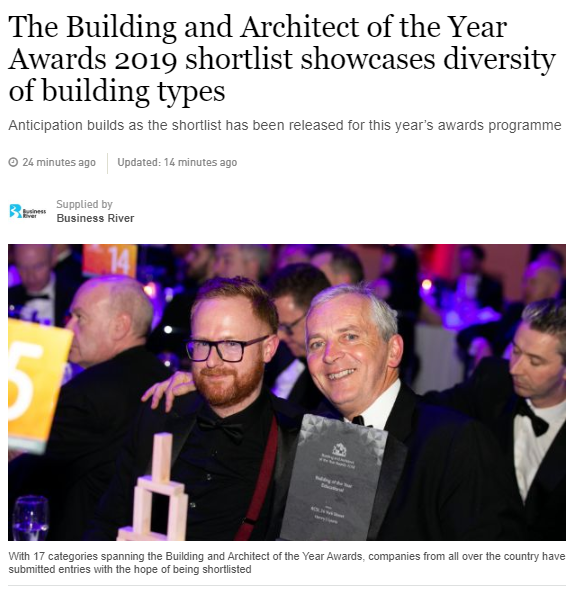
The Irish Times has published the full shortlist for the ‘Building and Architect of the Year 2019’ Award.
We are honoured for our ‘House overlooking Lough Foyle’ to be whittled down to a shortlist of 3 houses.
The full list, with some of the greats in architecture, is available to read here:
Announcement of the winner will be at The Mansion House in Dublin, on 3 October. Fingers crossed!
Building and Architect of the Year Awards
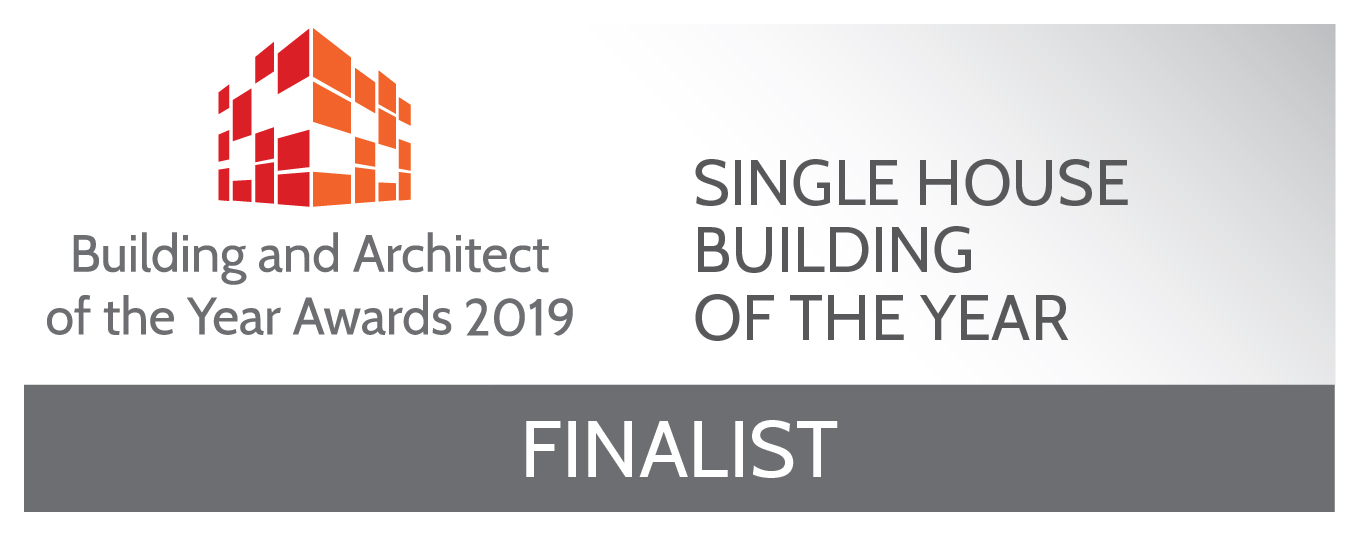
5 things to consider when designing your house (or extension)

It can be a daunting experience for those who have never undertaken the self build process before….but plan carefully, get the right design team around you…and it should be an exciting experience!
To get you started on the process, we have complied a list of the 5 most important things to consider:
1. Design your house for how you wantto live, not necessarily how you do live.
Dream. Aspire.
You would love your house to be a ‘gathering space’ for family? Design it as such.
You dream of having BBQ’s for friends? Design it in.
Want a space where you can hide away and read? Do it!
Dream big. Don’t settle for ordinary!
2. Future proof your house. Think about how your life is likely to progress.
Young toddlers will soon become teenagers, and then adults…eventually leaving the house. So, deciding against a mezzanine level because your 3 year old is a ‘climber’; when, in reality, he will be 5 before the house is built…. & has subsequently turned into the model child!!
3. Invest in the ‘big ticket’ items. Get the basics right.
Spend your money ensuring the rooms are the right size (not too big, not too small), & how the flow of the spaces work for your life. Construct your house to the highest standards you can afford – so as to reduce your living costs now and in the future. This will also make your house a more comfortable living environment. It is the one thing you will not regret.
4. Budget. As architects it is crucial that we know this – and how much flexibility there is in the budget. We need this information to inform the design: the size, complexity and specification of your house. Your budget is not necessarily how much you can afford to spend, but how much you are comfortable spending. Checking with a mortgage advisor prior to starting to design your house is a must: you need to know the maximum you can afford before deciding how much you want to spend.
5. Start now. Make decisions as early in the process as possible; use Pinterest to help you. See a door you like? Make the decision there and then that is your door. When the building is on site, questions will be quick and fast – about things you never thought about before (door stops, architraves, door handles, chimney pots!); you will be thankful when you can say ‘I got this one!’
And… the details do matter!
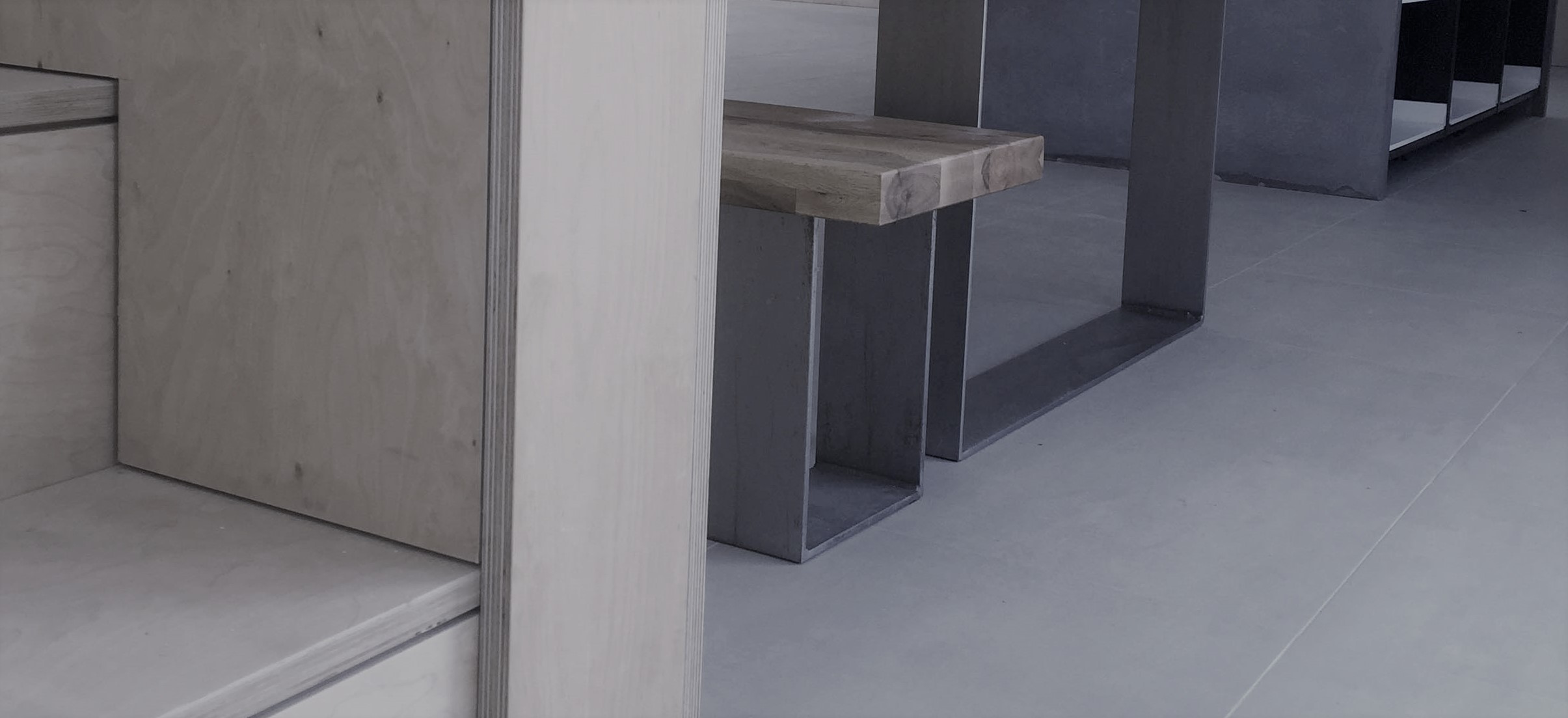
Should we all be building low energy houses…?
So, you have your dream house designed…and now wondering if you should / could go the high energy efficiency / Passive House route?
We often get asked…’Is it too late, after the design is done?’
A resounding ‘No!’
We can tweak your design, if we feel it is necessary, taking into consideration solar gain, prevailing wind, etc…but the main elements that make a house Passive are down to the detailed design.
The other question we often get asked is ‘Why build a Passive House?’
The answer people often expect from us is..…’because it is better for the environment..…’ After all we all love this place we call home….

This is only part of the argument. It’s obviously a consideration; we all want to use less fossil fuels. However, the main reason? It’s good for your pocket, and, often overlooked, provides a more comfortable living environment.
We’ve all been in (or lived in!) a draughty 70’s, or an old stone house. There are just some spaces that are impossible to heat; the fire is on, the oil is on, it’s actually reading a comfortable temperature….but it’s just…cold and uncomfortable. Draughty! This is the true advantage of building a Passive House. No more shouts of ‘Close the door! You’re letting all the heat out!!’ Because there are no draughts….no cold air movements that cool you down. Just an even, comfortable living temperature (now I’m not going to wade into that argument of ‘what temperature??!’)
So, how does a Passive House / low energy house work?
Well we all know about insulation: this is what keeps the heat in the house. It can become costly, especially when we are talking high energy efficiency houses. However, there are other elements that become more important the more energy efficient the house is. And don’t really add much expense onto your build cost – just somebody knowing what to do, and a little bit of care taken by your builder.

Air tightness: this cuts down on the draughts, seals up the joints between windows and walls…stops all that heat leaking out of your house. An old, leaky, poor airtightness, can be the equivalent of having a couple of windows open all year round. Wide Open. You wouldn’t dream of doing this when your house is cold, so why build a house that this could be the case? This can add a little bit of extra cost to the build (adding in airtightness paper and tape, and a couple of man-days work to do it)…but will save you money in the lifespan of your house. To counter-act the lack of fresh air, a Mechanical Ventilation Heat Recovery System will need to be installed; adding a little to the cost, but, again, better value for money.
A MVHR system brings fresh air into the house, but uses the warm stale air to heat the cold air; the 2 airs don’t meet, so fresh air is not contaminated by the indoor pollutants. Thereby bringing in fresh, warm air. Some systems have started to introduce a cooling system onto the MVHR, thereby providing a reasonably cost effective air conditioning system for the summer months.
Where our skills set us apart, as an architects practice, is in the detailed design. At this level of energy efficient building, cold bridges* play a huge role. In a new build house, with traditional construction details, up to 50-60% of the heat loss through the fabric of the building can be via cold bridges.
Through our Passive House training and experience, we have the ability to design out the impact of cold bridging, thus, reducing the heating load of your building, with very little additional costs to the build.
We believe that, when you are spending £++, you need to get the foundations right; get the design right, and the building fabric right. The rest is merely window dressing.

*Cold bridging: where an object which has a higher thermal conductivity than the surrounding materials, creates a path of least resistance for heat transfer. Thermal bridges result in an overall reduction in thermal resistance of the object.
Thermal bridges in buildings may impact the amount of energy required to heat, cause condensation (moisture) within the building envelope, and result in thermal discomfort. In colder climates (like ours) thermal heat bridges can result in additional heat losses and require additional energy to mitigate.
In simple terms….an uninsulated steel post on an outside wall will be cold. Heat from inside will flow to the post, and on outside. This is a cold bridge. Further exacerbated by condensation on the steel post. Obviously this is an extreme example. There are many, more hidden examples, in every building ever built. It is our job to design out these areas where heat can escape from your building.
Ask an Architect…?
 How do I find and decide on an architect?Well…you have just found us!Seriously, though: all architects are required to be registered by the Architects Registration Board (ARB), so check on there before engaging anybody, to ensure they are an architect.Mostly, we would say, though, is: find someone whose work inspires you, and more importantly, that you feel you can connect with. It is soooo much easier working with someone who ‘gets you’.Why do I need an architect?
How do I find and decide on an architect?Well…you have just found us!Seriously, though: all architects are required to be registered by the Architects Registration Board (ARB), so check on there before engaging anybody, to ensure they are an architect.Mostly, we would say, though, is: find someone whose work inspires you, and more importantly, that you feel you can connect with. It is soooo much easier working with someone who ‘gets you’.Why do I need an architect?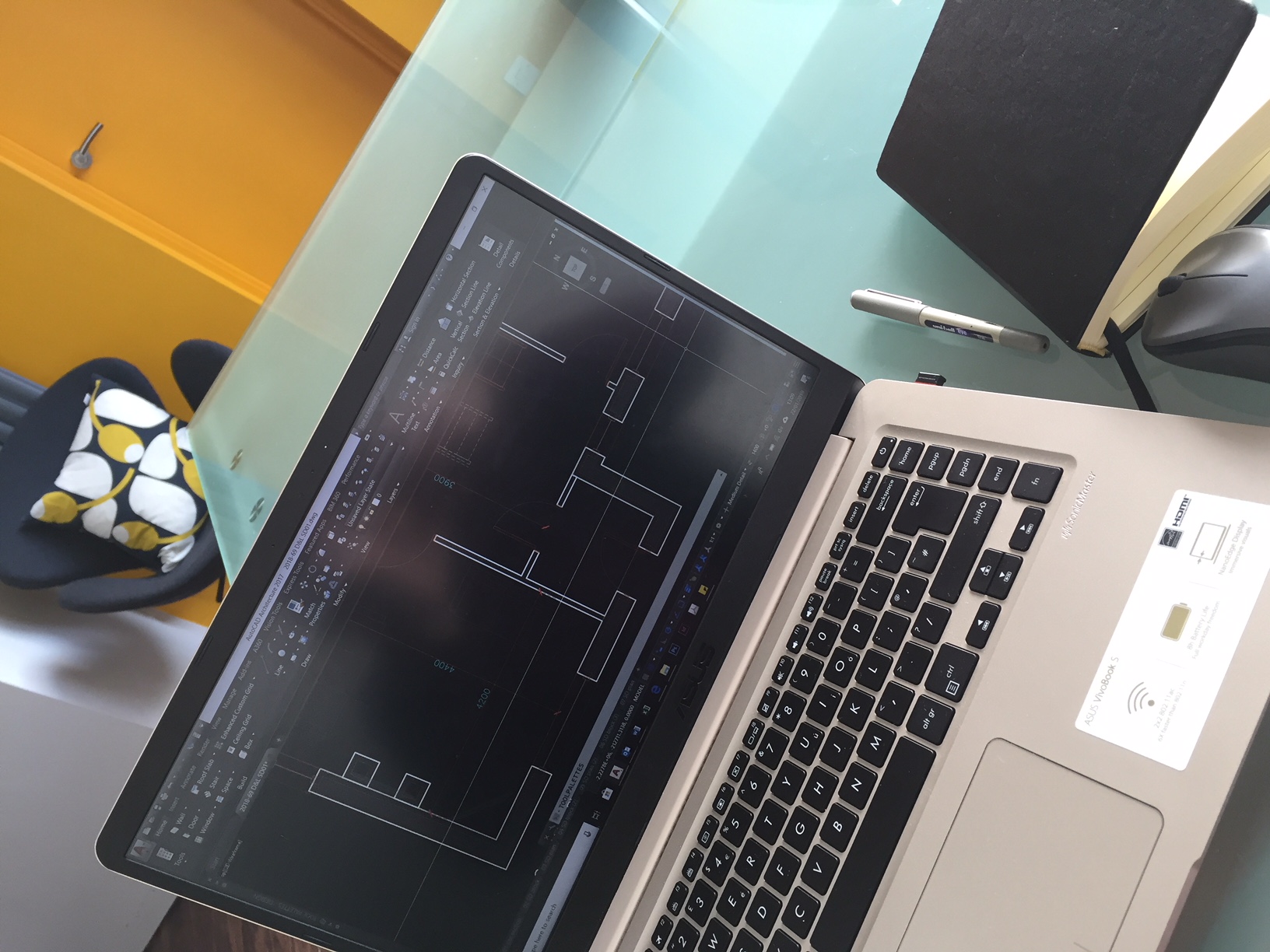 Other than producing the drawings required for statutory bodies (planning & building control) and providing professional indemnity insurance, architects are designers & problem solvers. An architect will produce solutions to your problems: even problems you didn’t realise you had. Better than that: we will make those solutions beautiful!And remember…it took us 7 looong years to understand buildings and design!How much do architects charge?It’s not an easy answer. We prefer, where possible, to give a fixed sum fee (ie £xx, and stick to it), worked out on the number of hours we believe it will take us to create your vision. Unfortunately, that means we can’t give a figure here, as each project is unique: based on you, your family, your house / site, and your brief. We also offer an a la carte menu: so that you can choose how much / little you want us to be involved. If you are interested in our design skills, contact us: we aren’t scary, and wont charge just for talking ;-D. We understand that everybody has their own budget!How do we move forward with the project?Come and speak to us! The initial consultation is free. During that, we will discuss your problems (architectural!), your wishes and what we can do for you. We will also have had a quick look at your site to see if there are any issues that you need to be aware of (potentially difficult site / expensive foundations / planning issues, etc). We can also show you examples of our work, and answer any queries you may have.Why Marshall McCann Architects?
Other than producing the drawings required for statutory bodies (planning & building control) and providing professional indemnity insurance, architects are designers & problem solvers. An architect will produce solutions to your problems: even problems you didn’t realise you had. Better than that: we will make those solutions beautiful!And remember…it took us 7 looong years to understand buildings and design!How much do architects charge?It’s not an easy answer. We prefer, where possible, to give a fixed sum fee (ie £xx, and stick to it), worked out on the number of hours we believe it will take us to create your vision. Unfortunately, that means we can’t give a figure here, as each project is unique: based on you, your family, your house / site, and your brief. We also offer an a la carte menu: so that you can choose how much / little you want us to be involved. If you are interested in our design skills, contact us: we aren’t scary, and wont charge just for talking ;-D. We understand that everybody has their own budget!How do we move forward with the project?Come and speak to us! The initial consultation is free. During that, we will discuss your problems (architectural!), your wishes and what we can do for you. We will also have had a quick look at your site to see if there are any issues that you need to be aware of (potentially difficult site / expensive foundations / planning issues, etc). We can also show you examples of our work, and answer any queries you may have.Why Marshall McCann Architects?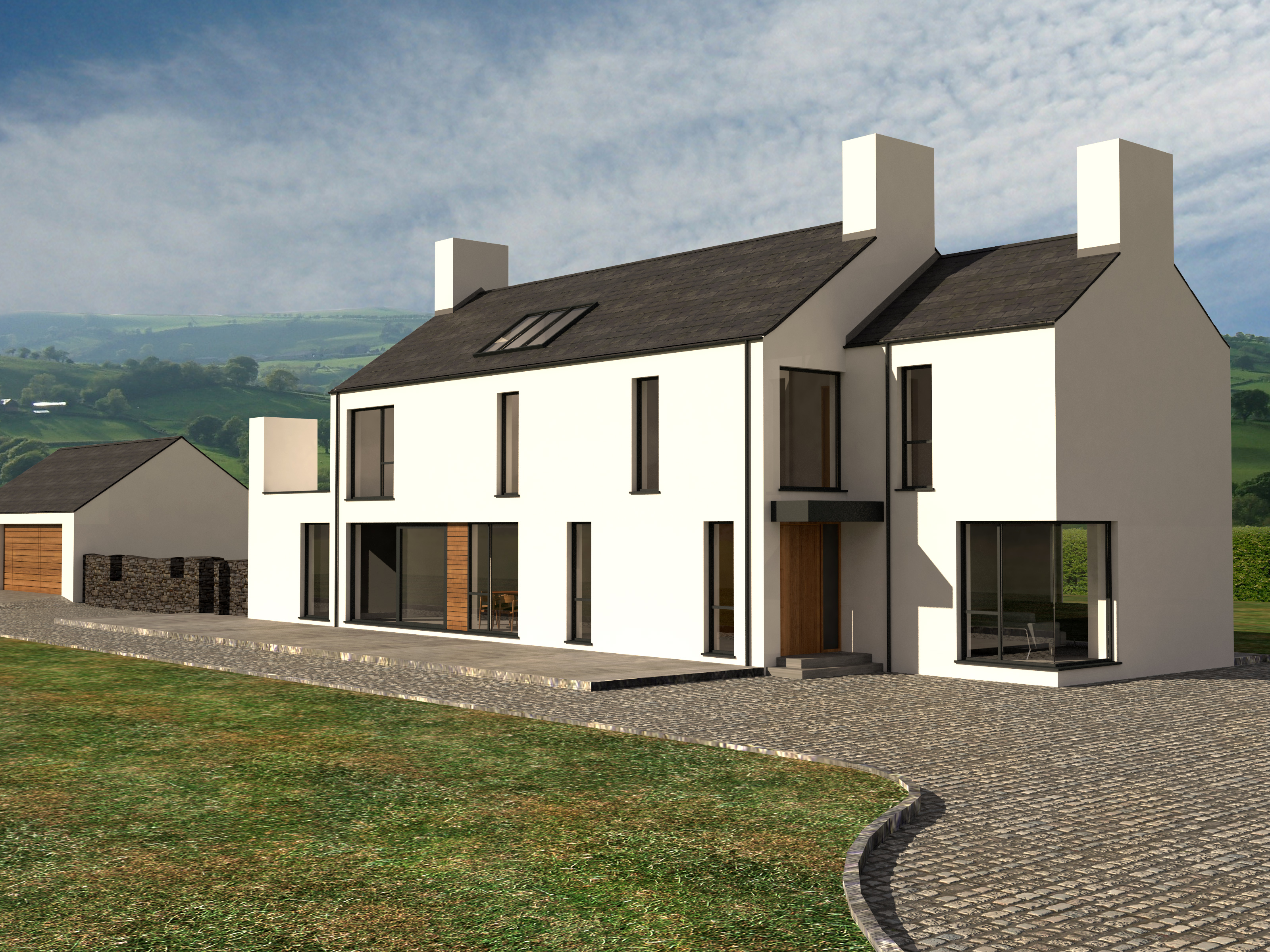 We are a start-up company, with a wealth of experience behind us: so we are eager and knowledgeable. We can provide you with testimonials if you wish (some of our lovely clients may even be amenable to talking you through their experience).As a brother and sister duo, we have come to this point from 2 different paths. Roisin is a registered architect, previously a Design Director in a larger practice; with experience in planning, design and management (houses, commercial, hotels and development houses). Martin has a degree in architecture, and is a registered Passive House Designer. He comes from a technical background: working as a senior technician in a few of Belfast’s leading architectural design firms. He has also worked for contractors: his technical, practical and cost awareness skills, combined with his design background mean he has an eye for detail. This attention to detailed design meant that his own house won the FMB Energy Efficient House of the Year UK; a house which has yearly energy bills (heating and lighting / electrical) less than £600. The PV solar panels on his roof means that he actually nets £200 on his energy bills.So…go on! Give us a call.
We are a start-up company, with a wealth of experience behind us: so we are eager and knowledgeable. We can provide you with testimonials if you wish (some of our lovely clients may even be amenable to talking you through their experience).As a brother and sister duo, we have come to this point from 2 different paths. Roisin is a registered architect, previously a Design Director in a larger practice; with experience in planning, design and management (houses, commercial, hotels and development houses). Martin has a degree in architecture, and is a registered Passive House Designer. He comes from a technical background: working as a senior technician in a few of Belfast’s leading architectural design firms. He has also worked for contractors: his technical, practical and cost awareness skills, combined with his design background mean he has an eye for detail. This attention to detailed design meant that his own house won the FMB Energy Efficient House of the Year UK; a house which has yearly energy bills (heating and lighting / electrical) less than £600. The PV solar panels on his roof means that he actually nets £200 on his energy bills.So…go on! Give us a call.

